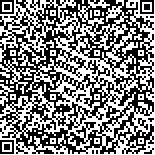| This article has been:Browse 1380Times Download 759Times |

scan it! |
|
|
| DOI:10.13522/j.cnki.ggps.2022447 |
|
| Estimating Topsoil Water Content Using Crop Water Stress Index and Remote Sensing Technologies |
|
LIN Rencai, CHEN He, ZHANG Dening, WEI Zheng,
CAI Jiabing, ZENG Ran, ZHANG Lili, JIA Yuling
|
|
1. State Key Laboratory of Simulation and Regulation of Water Cycle in River Basin,
China Institute of Water Resources and Hydropower Research, Beijing 100038, China;
2. Operation and Maintenance Center of Panzhuang Irrigation District, Dezhou 253000, China;
3. Cangzhou Water Conservancy Engineering Quality Technology Center, Cangzhou 061000, China
|
| Abstract: |
| 【Objective】Change in topsoil water content is intricately linked to plant transpiration, and understanding its spatiotemporal variation at large scales is crucial to improving water and agriculture management. The objective of this paper is to investigate the feasibility of remote sensing for estimating topsoil water content, its association with crop water stress index (CWSI) and the impact of cropping systems.【Method】The experiment site was an irrigation field at Jiefangzha in Hetao Irrigation District. The topsoil water content in different cropped lands (sunflower, summer maize, spring wheat and pepper) was calculated, inversely, in 2014 using the MOD16A2 imagery, meteorological data, and the P-M model and CWSI. The estimated soil water content was compared with ground-truth data.【Result】The CWSI and topsoil water content were inversely proportional. The method was accurate for estimating topsoil water content in wheat and sunflower lands, with the determination coefficient between the estimated and measured soil water content for the wheat and sunflower lands being 0.748 and 0.357, respectively. However, it was less accurate for maize and pepper lands as they were irrigated more frequently. These suggested that the remote sensing-based method works better when the soil is dry than when it is wet.【Conclusion】The CWSI-based remote sensing method is more suitable for estimating topsoil water content in lands planted with drought-tolerant crops than lands grown with water-demanded crops which need more irrigation. Our results provide insight into the impact of cropping systems on accuracy and reliability of remote sensing methods for estimating topsoil water content. It has potential application for agricultural management in arid and semi-arid regions. |
| Key words: soil water content; CWSI; MOD16A2; Jiefangzha irrigation field |
|
|